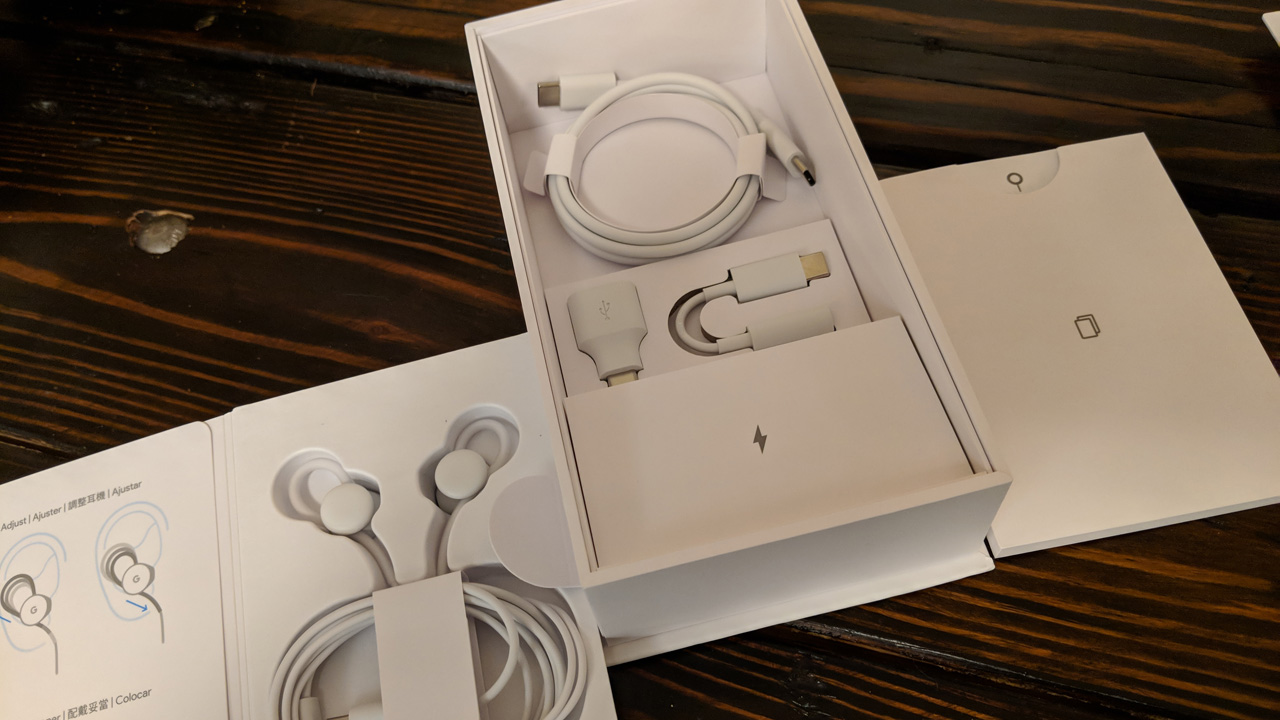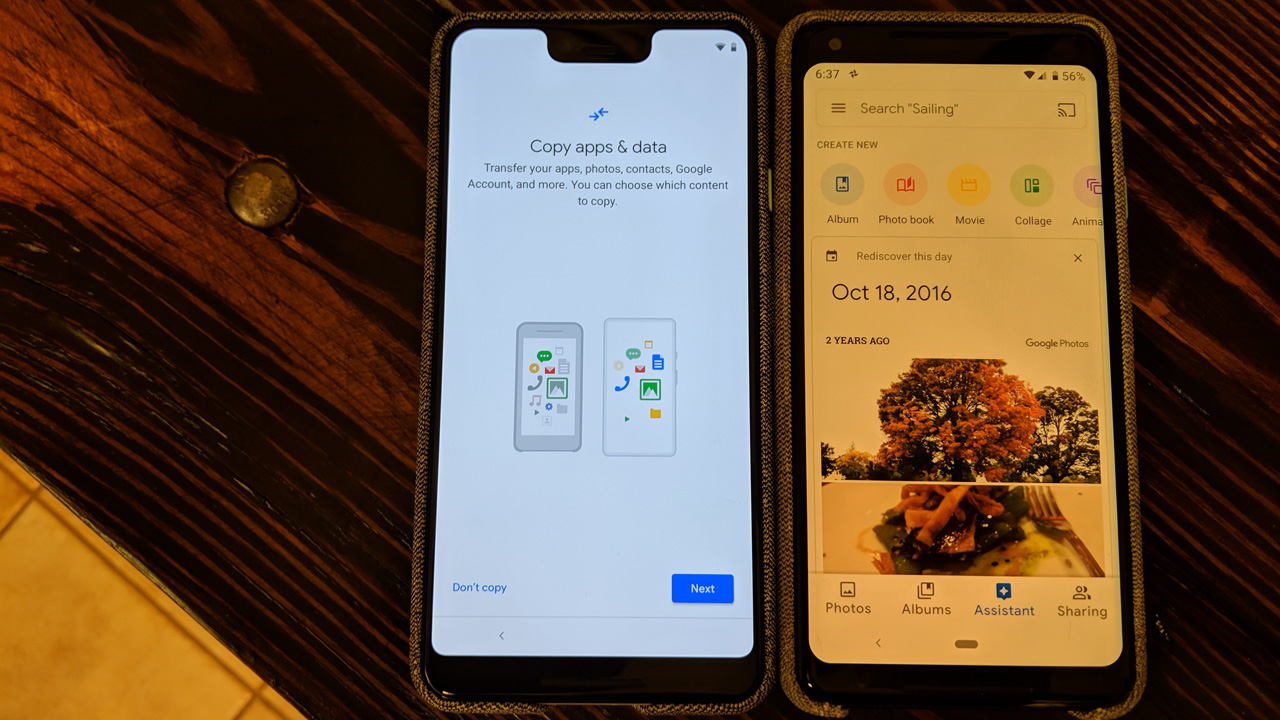Google Pixel 3 and Pixel 3 XL First Impressions
- Paul Thurrott
- Oct 19, 2018
-
28
![]()
Not sure whether I could handle the notch on the larger handset, I ordered both a Google Pixel 3 and Pixel 3 XL to see which I prefer. Here are my initial thoughts on each, mostly about the hardware and design.
And in case it’s not clear, this one is personal: It’s highly probable that one of these will be my next phone, though I will also be evaluating the OnePlus 6T later this month and, when it’s available in carrier unlocked form, the iPhone XR as well.
Windows Intelligence In Your Inbox
Sign up for our new free newsletter to get three time-saving tips each Friday — and get free copies of Paul Thurrott's Windows 11 and Windows 10 Field Guides (normally $9.99) as a special welcome gift!
"*" indicates required fields
But Pixel remains my first choice. The appeal of this product line, despite the reliability issues I encountered with the Pixel 2 XL, remains: From the clean Android image to the amazing camera to the Project Fi compatibility, Google’s Pixel just offers the right combination of the things I value most.
![]()
But there’s a new question this year. Which Pixel?
This wasn’t an issue previously. For the first two generations of Pixel, and with the Nexus 6P before that, I stuck with the XL-class handsets whose primary differentiator was the larger display. (I had likewise moved to the Plus-sized iPhones as soon as Apple finally embraced the phablet.) But three factors have led to me to at least consider the smaller, non-XL Pixel 3 for this round.

The first and most important, of course, is that notch: The Pixel 3 XL’s notch is ludicrously, unnecessarily, and embarrassingly large compared to any of the competition. It arrives at a time when other phone makers, like Huawei and OnePlus, are dramatically reducing the sizes of the notches on their newest handsets. And as bad, there’s a “chin” bezel on the bottom of the display, something that is typically missing on notch-based phones. Put simply, Google’s design isn’t just behind that of other phone makers. It’s terrible.
The second factor is a byproduct of the tall/thin handset design trends that are sweeping the industry: With the smaller Pixel 3 finally adopting this design and offering a 5.5-inch 18:9 display, you’re getting more display in a smaller body. (The XL offers a bigger 6.3-inch 18.5:9 display that offers both a higher resolution and a higher pixel density.) And there’s something enjoyable about using a small, truly pocketable design. Assuming, of course, I can even see the screen well enough.
![]()
Third, there are really no important functional or internal differences between the Pixel 3 and Pixel 3 XL. The cameras, for example, are identical between the two, as are the processor, RAM, storage options, and so on. At a functional level, I’m not losing anything by choosing the smaller phone, and I’d even save about $100 over the more expensive XL.
![]()
That was the theory, at least. But now that I’m home and have both phones in hand—they were delivered two days early, and while I was still in Dublin—I have already evolved my thinking on these devices.
And I believe that the non-XL Pixel 3 will be a bit too small for me, though I like the design a bit better that of the XL. Not that either is particularly modern: The Pixel 3 looks like a nearly two-year-old Galaxy S8. And the XL … Ah boy.
![]()
I will say this: It’s the easier upgrade from the Pixel 2 XL, not that anyone should have pay $1000 to make that happen. I even got the same basic protective case that I was using with the Pixel 2 XL, so the only obvious external differences are the color—I chose white for the Pixel 3 XL—and that notch.
![]()
That awful, terrible notch.
![]()
What was Google thinking? Is the logical question to ask: It has dozens of devices to inspire it. But instead of making a best-in-class design that takes advantage of the fact that Google is literally the last phone maker or note to start shipping Snapdragon 845-based devices, here it is. Completely screwing it up.
Apple fans are troubled by my constant harping about how the iPhone X/XS’s “all screen” design is anything but that. But here’s Google making a mockery of that criticism by including both the biggest notch in the industry and a bottom “chin” bezel. What the flying f@#k, Google. Holy shit. From a design standpoint, the Pixel 3 is meh, but the Pixel 3 XL is just terrible.
Turning the handsets over, you’ll find a design that is slightly refined from last year, with a slightly modified version of the two-panel look from previous Pixels. Until this year, the top panel on the back was glass to aid with wireless reception, and the bottom was the normal metal body material. This year, however, it’s all-glass. This design helped Google bring wireless charging, belatedly, to Pixel.
![]()
But it also created an interesting design dilemma, since Google wanted to carry that two-panel Pixel design forward (for some reason). So the glass on the larger bottom panel on the back has been etched into a matte finish that sort of replicates the feel of previous Pixels. I’ve heard that it scratches and smudges too easily. But again, I’ll be using a case. And it actually feels very nice, and very natural, to me. I’m not sure I would have known it was glass.
![]()
Given the reliability issues I did experience with Pixel 2 XL, I’ll be more sensitive than usual to any weirdness. But I’m also a little worried about quality: The Pixel 3 and 3 XL both share a new all-glass build that I’m a bit worried about, though I’ll protect whichever one I keep with a case, of course.
![]()
Turning again to the front and trying to avoid staring at the car crash of that XL notch, I can see that the displays on each are also different, and not just in size. And not just different from each other.
![]()
Where last year’s Pixel 2 XL had a notoriously terrible LG OLED display, the Pixel 3 XL utilizes a superior Samsung OLED display, and I’m very eager to compare the two in a variety of conditions. As noted, it’s 6.3-inches big, and it provides a resolution of 2960 x 1440 (523 PPI).
The smaller Pixel 3 apparently uses an LG OLED display—uh-oh—but it’s supposed to be vastly improved over last year’s LG debacle, and it looks great. At 5.5-inches, the Pixel 2 display provides a resolution of 2160 x 1080 (440 PPI). I’ll keep eyeballing it and comparing it to the more pixel-packed XL, but so far so good.
![]()
What I was most curious about, I guess, was how the Pixel 3 XL’s notch-based display compares to that of the notchless Pixel 2 XL. Do you still get extra on-screen real estate?
The answer is yes, you do. But not by much. The Pixel 3 XL notch is so big that the Android status bar area is over twice as tall as it is normally, and that extra space is just wasted. But if you line up the bottoms of the status area on each device, you’ll see that the Pixel 3 XL’s display is—maybe—one-quarter of an inch taller than that of the 2 XL.

Neither handset offers a headphone jack, which I feel is another embarrassing mistake. Worse, the USB-C port on my Pixel 2 XL was the source of several reliability issues that necessitated two Pixel 2 XL replacements. I assume it’s obvious why I’m nervous about this port on the Pixel 3s.
![]()
And then there’s the camera. I’ve only taken a handful of shots—I did bring the Pixel 3 XL with me on this morning’s walk—so I just don’t have much to go on yet. But it’s already clear that the Pixel 3/XL will perform at least as well as the Pixel 2 XL in this area. This will obviously be a big focus for my testing, as will the Pixel 3 XL’s unique AI-based functionality.
![]()
So I’ll have more soon. But I think the Pixel 3 is going back. And that I’ll be sticking with the Pixel 3 XL, terrible notch and all.
Tagged with
Conversation 28 comments
-
nfeed2000t
<p>There is no need for notch hysteria. I have a phone with a notch and I got use to it in about a day. </p><p><br></p>